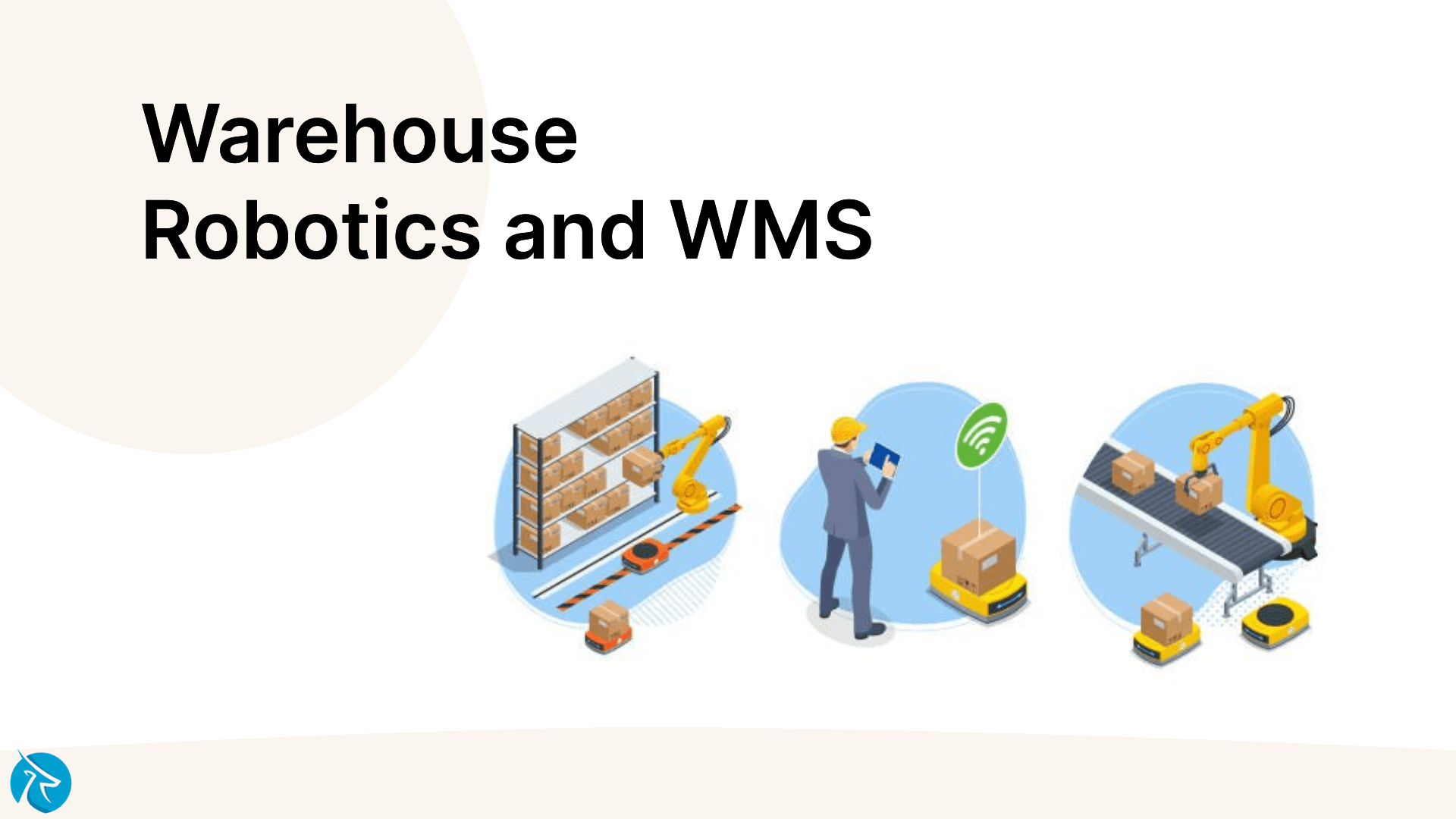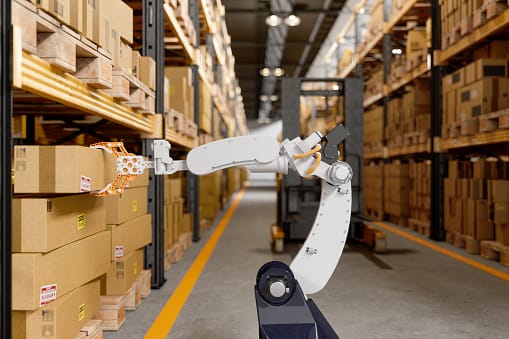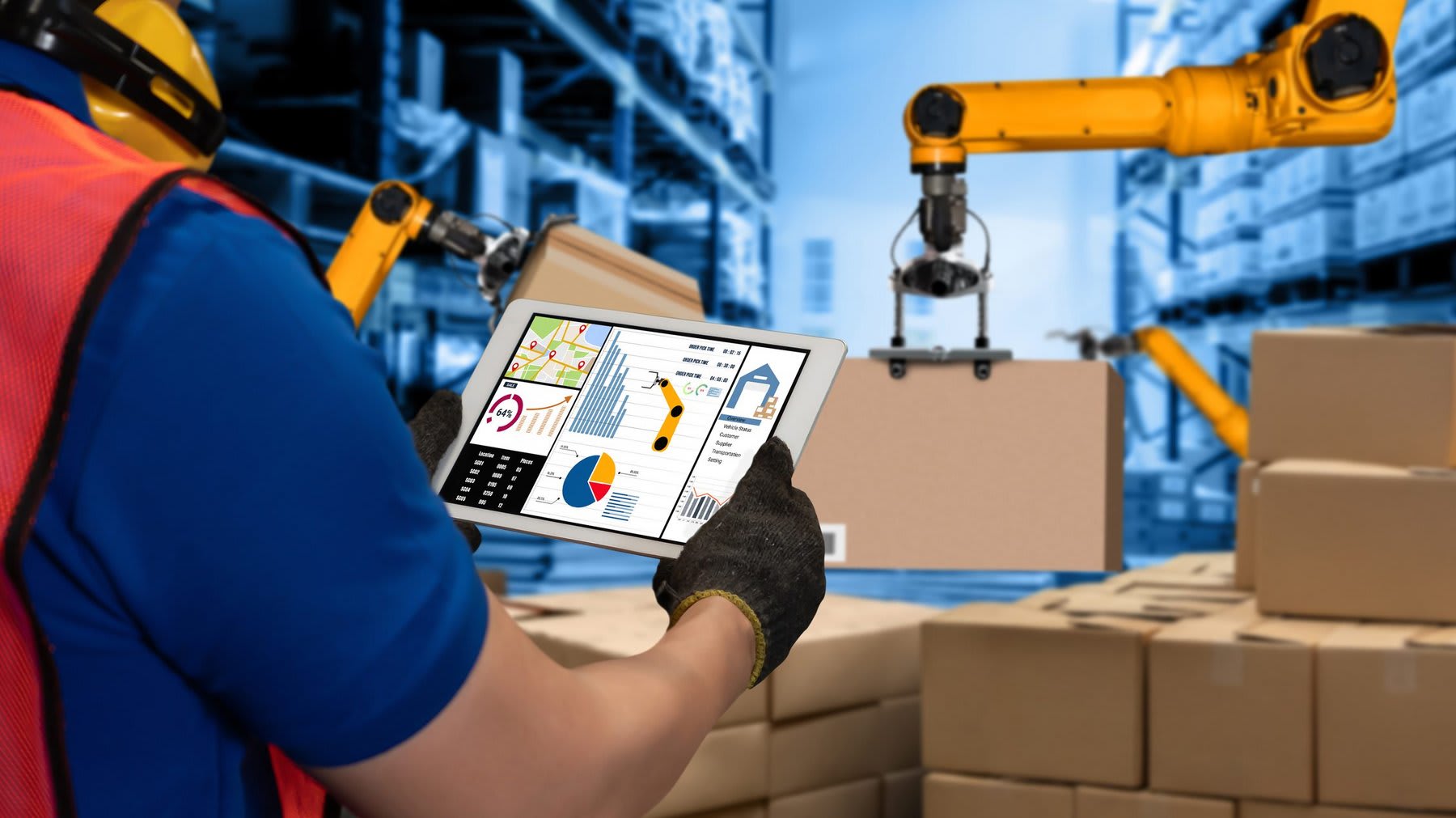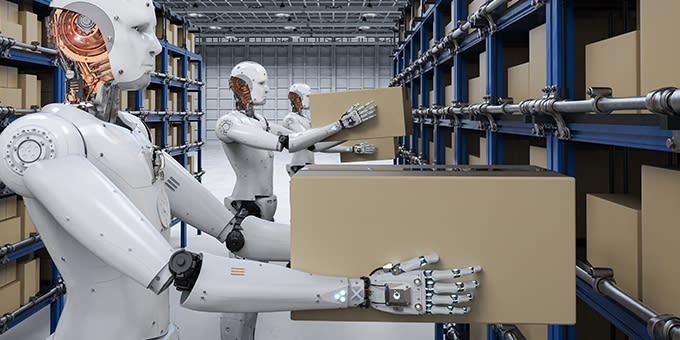Warehouse Robotics and WMS: Everything You Need to Know

Warehouse robotics and warehouse management software (WMS) are two essential components of modern warehousing operations. Here's everything you need to know about these technologies and how they work together:
Warehouse Robotics
Warehouse robotics refers to the use of robots and autonomous systems to perform various tasks in a warehouse, such as sorting, picking, and transporting goods. There are several different types of robots, including:
Autonomous mobile robots (AMRs): These are self-driving robots that use sensors and AI technology to navigate warehouse environments and perform tasks like picking, packing, and transporting goods.
Automated storage and retrieval systems (AS/RS): These systems use technology like conveyors, stacker cranes, and robot shuttles to automate the storage and retrieval of goods within a warehouse.
Autonomous forklifts: These are self-driving forklifts that can transport goods around a warehouse and load and unload pallets.

The benefits of warehouse robotics include increased efficiency, accuracy, and speed of operation, as well as reduced labor costs and the ability to handle larger volumes of goods.
Warehouse Management Software (WMS)
Warehouse management software (WMS) is a tool that helps manage and optimize warehouse operations. This software automates tasks such as inventory management, order processing, and shipping, and provides real-time visibility into warehouse operations. Some of the features of WMS software include:
Inventory control: This feature helps manage inventory levels, keep track of incoming and outgoing goods, and ensure optimal storage and material flow. Order processing: This feature streamlines the order fulfillment process, from receiving orders to shipping and delivery, including e-commerce orders.
Labor management: This feature helps manage labor resources by monitoring employee performance, optimizing scheduling, and reducing errors.
Reporting: WMS software includes analytics and reporting tools to help generate insights into warehouse operations, identifying areas for improvement and opportunities for cost reduction.
The benefits of WMS software include improved accuracy, efficiency, and visibility into warehouse operations, which can lead to cost savings, better decision-making, and higher customer satisfaction.

Together, warehouse robotics and WMS software can significantly improve warehouse operations, enabling businesses to better manage inventory, minimize human error and labor costs, and improve customer satisfaction. By adopting these technologies, warehouses can stay competitive and optimize their operations in the ever-evolving landscape of modern commerce.
Advantages & disadvantages of using the Warehouse Robotics
Benefits of using the Warehouse Robotics
Warehouse robotics is revolutionizing the way businesses operate their warehouses. By automating repetitive and time-consuming tasks, robotics can help increase efficiency, accuracy, and scalability while reducing labor costs and improving safety. In this article, we will explore the benefits of using warehouse robotics in the modern supply chain.

Enhanced efficiency: Warehouse robotics can help businesses achieve higher levels of efficiency by performing tasks faster and more accurately than human workers. With robotics, businesses can reduce the time and effort required to get products ready for sale, increasing overall throughput and reducing lead times.
Increased accuracy: The high level of precision provided by warehouse robotics can help ensure that products are shipped correctly and on time, improving customer satisfaction and reducing the risk of costly errors or returns. By reducing handling, products are also less likely to be damaged during the handling or packing process.
Scalable operations: With robotics, businesses can easily scale their warehouse operations up or down based on demand. This flexibility allows businesses to react more rapidly to changes in market conditions while maintaining operational efficiency.
Improved safety: Warehouse robotics can help reduce the risk of work-related injuries for employees. By automating the most physically demanding tasks, workers can focus on tasks that require critical thinking and problem-solving, reducing the risk of accidents on the job.
Cost savings: While robotics technology may come with a high initial cost, long-term cost savings can be significant. Reduced errors, increased efficiency, and lower labor requirements can help to cut overall costs, leading to an increased bottom line and a competitive advantage.
Warehouse robotics offers a host of benefits for businesses looking to improve their supply chain operations. With increased efficiency, accuracy, scalability, improved safety, and cost savings, warehouse robotics are an integral part of the modern warehouse environment. If you're interested in implementing warehouse robotics in your operations, it is advisable to consult with robotic integrators to have a tailored to your specific needs.
Drawbacks of using the Warehouse Robotics
While warehouse robotics have many benefits, they also come with some drawbacks that businesses need to consider before investing in them. Then, what are exactly the drawbacks of using warehouse robotics in the modern supply chain?
High initial cost: The initial investment in warehouse robotics can be significant, requiring a large capital outlay that may not be feasible for all businesses. This can make it difficult for small and medium-sized businesses to justify the cost and may limit the adoption of the technology.
Maintenance and repair costs: Although robots are generally reliable, they still require maintenance and repair, which can be costly and time-consuming. Maintenance costs include the cost of replacing batteries, changing filters, and making mechanical repairs. These can lead to downtime in the event of any breakdowns and could affect the efficiency of operations.
Limited flexibility: Robots are typically programmed to perform specific tasks and may not be well-suited for tasks that require a high degree of dexterity or decision-making. This can limit the versatility of warehouse robotics and may require human intervention in certain situations.
Potential job loss: Warehouse robotics may eliminate the need for jobs, impacting the livelihoods of human workers who were previously performing those tasks. This could potentially result in labor issues and restrictions that could affect the balance between manual labor and automation.
Integration challenges: The integration of robotics technology into existing warehouse workflows can be complex and time-consuming, requiring significant planning and coordination. This can lead to logistical challenges during the adoption process, which might include information requirements for the new automated systems.
These drawbacks should be carefully considered to make informed decisions on the return on investment. Businesses should do their due diligence and assess the potential benefits and drawbacks while accounting for the specific needs of their operation before adopting warehouse robotics.
Conclusion
The integration of warehouse management systems (WMS) and warehouse robotics offers significant benefits to businesses. By combining the power of WMS software with efficient and accurate robotics, businesses can streamline operations, reduce mistakes, increase accuracy, and save money while improving safety in the warehouse environment.
The use of WMS ensures that inventory is tracked, updated, and managed more efficiently, while warehouse robotics can automate repetitive or labor-intensive tasks that would otherwise have to be performed by human workers. This results in greater efficiency, cost savings, and scalability for business operations. While the adoption of warehouse robotics may involve initial investment costs and require upskilling of the workforce, the long-term advantages such as improved safety, scalability, increased efficiency, and accuracy make it worthwhile for businesses that desire to remain at the top of their respective markets.
Businesses that adopt warehouse robotics should work closely with robotic integrators and IT professionals to ensure that the integration process is smooth and successful. This includes the integration of hardware and software coordinating with the WMS system to provide maximum results in the warehouse.
Overall, the integration of WMS and robotics technology can transform the warehouse into a lean, efficient, well-organized space where employees and robots work together seamlessly and cost-efficiently, making for a great experience for both the workforce and customers.











